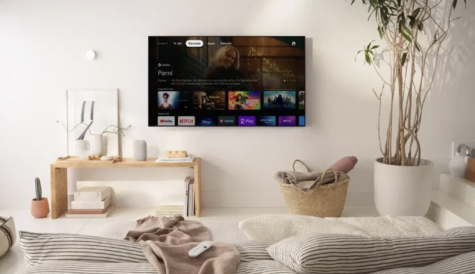Direct-to-consumer becoming mainstream, says Ampere
Direct-to-consumer distribution is becoming mainstream, with OTT subscription net additions overtaking pay TV additions in 2014 and SVoD revenue looking set to pass public TV revenues sometime in the next decade, according to Ampere Analysis.
Delivering a closed presentation to content providers alongside OTT platform provider Magine at last week’s Connected TV World Summit, Guy Bisson, research director at Ampere Analysis, said that direct-to-consumer was “an almost obscene phrase” a few years ago, but that times have changed. Distribution costs of direct delivery are now at a level that makes sense for a lot of content owners, he said.
SVoD is now outstripping pay TV in terms of net additions, said Bisson. Cord cutting has also moved beyond the US, with some non-US pay markets in decline as a result.
Bisson said that there is pressure on the channel business as operators push back on costs making it more attractive for channels to go direct.
According to Ampere, OTT delivery does not necessarily substitute for pay TV, however. In the US 57% of homes now take both pay TV and an SVoD service, compared with 43% who take pay TV only. In Europe, Danish viewers are also more likely to take both SVoD and pay TV than pay TV only, by 52% to 48%.
Other markets still have some way to go to match these numbers however. In the UK, only 37% take both SVoD and pay TV, while in France the proportion doing so is only 10%.
In terms of the broadcast value chain, the main difference is that infrastructure is replaced by the cloud, said Bisson. One key benefit is that the costs of getting a channel on air are considerably lower. There is however a scaling cost for CDN delivery that grows with an operator’s base, as against the one-off upfront cost of DTH delivery. Nevertheless, for most players, OTT delivery makes growing sense, said Bisson. “You have to get pretty big before it becomes cost ineffective,” he said.
According to Ampere, broadcast is cheaper at all definitions about 10 million viewers a day or when the average viewers watches more than four hours of content a day. In between these limits, however, the viability of OTT versus broadcast depends on whether content is HD, SD or UHD. For a daily user base below 20,000, OTT is always cheaper, even if all viewers watch five hours of content a day and all content is UHD. With SD content, OTT “starts to scale beyond broadcast at 50,000 viewers per channel”, according to Ampere.
Bisson said that consumers are increasingly building their own bundles. A Netflix customer is one and a half times more likely to take Sky’s OTT offering Now TV than non-Netflx customers, and close to two times more likely to take Amazon Prime Instant Video.
Consumers are increasingly becoming “content connoisseurs” who watch TV through apps and do not believe they will watch any broadcast TV in five years time, said Bisson. These “young, wealthy, engaged” viewers watch a bit less TV than the average, a lot less linear, and use apps for a good part of their viewing.




